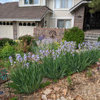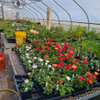Desirable plants that grow like weeds in SE Idaho
GardeningHeidi
9 years ago
Related Stories

GARDENING GUIDESLet's Weed Out 4 Native Plant Myths
Plant wisely for a garden that supports pollinators and requires less work
Full Story
GARDENING GUIDESGrow Your Own Privacy: How to Screen With Plants and Trees
Use living walls to lower your home and garden's exposure while boosting natural beauty in your landscape
Full Story
NATIVE PLANTSGreat Native Plant: Grow Wild Quinine for Its Unique Clusters of Blooms
Get connoisseur cred and unique blooms with this uncommon plant. Bonus assets: It’s low maintenance and drought tolerant
Full Story
GARDENING GUIDES5 Ways to Naturally Win the Weed War
Show irksome weeds no mercy with these tricks for combating them sans chemicals
Full Story
GARDENING GUIDESWeed War: When and How to Use Chemical Herbicides
Before you spray, arm yourself with knowledge about which weed killers — natural or synthetic — are right for your yard
Full Story
EDIBLE GARDENSNatural Ways to Get Rid of Weeds in Your Garden
Use these techniques to help prevent the spread of weeds and to learn about your soil
Full Story
EDIBLE GARDENSHow to Grow Your Own Sweet Summer Crops
This guide will help any gardener get started on growing the freshest warm-season veggies and berries for summer
Full Story
GARDENING AND LANDSCAPINGGrow a Lush Privacy Screen
No need to wait forever for patio privacy the green way. These 10 ideas will get your screening up and running in no time
Full Story
GARDENING GUIDESWhat Kind of Roses Should You Grow?
Want to add the beauty of roses to your garden? Find out which ones, from old-fashioned to modern, are right for you
Full Story
SPRING GARDENINGHow to Grow a Rose Garden in Pots
Everything can come up roses, even without a plot of soil in sight. This step-by-step guide to growing roses in containers shows you how
Full StoryMore Discussions









gjcore
gardenper
Related Professionals
Bridgetown Landscape Architects & Landscape Designers · Hershey Landscape Architects & Landscape Designers · Oconomowoc Landscape Architects & Landscape Designers · Salem Landscape Architects & Landscape Designers · Bethel Park Landscape Contractors · Cliffside Park Landscape Contractors · Dixon Landscape Contractors · La Mirada Landscape Contractors · Salem Landscape Contractors · West Chicago Landscape Contractors · Raytown Landscape Contractors · Muscatine Solar Energy Systems · Pinellas Park Solar Energy Systems · Eden Prairie Solar Energy Systems · New Lenox Solar Energy SystemsZachS. z5 Platteville, Colorado
GardeningHeidiOriginal Author
ZachS. z5 Platteville, Colorado
GardeningHeidiOriginal Author
ZachS. z5 Platteville, Colorado
GardeningHeidiOriginal Author
Skybird - z5, Denver, Colorado
GardeningHeidiOriginal Author
Skybird - z5, Denver, Colorado
polygonum_tinctorium